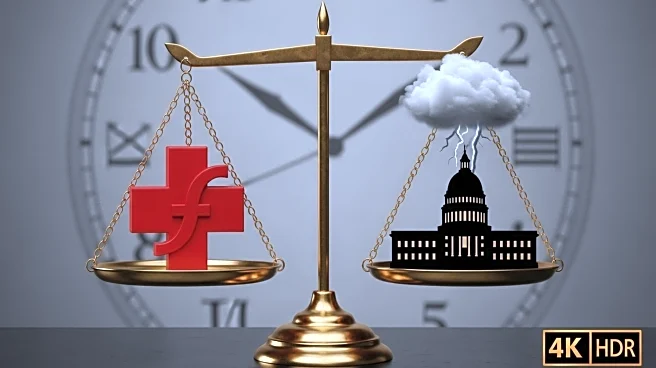What's Happening?
A recent survey conducted by the Gardner Food and Agricultural Policy Survey (GFAPS) reveals significant shifts in public priorities for USDA spending. The survey, which gathered responses from approximately 1,000 U.S. consumers, shows increased support for food assistance programs, with a 10% change in preferred funding allocations. Despite this, the Congressional Budget Office projects a reduction in food assistance spending. Public allocations for farm support have declined, while Congress has increased spending in this area. The survey highlights discrepancies between public preferences and actual policy changes, with food safety and inspection gaining more public support. The survey also indicates differences in spending preferences based on political affiliation.
Why It's Important?
The shifts in public priorities for USDA spending have implications for food and agricultural policy. The increased support for food assistance programs reflects growing concerns about food security and the importance of these programs in addressing nutritional needs. However, the reduction in projected spending for food assistance by Congress may lead to challenges in meeting public expectations. The discrepancies between public preferences and policy changes highlight potential areas of frustration and the need for alignment between public priorities and government actions. The survey results underscore the importance of considering public input in shaping food and agricultural policy to ensure it meets the needs of diverse stakeholders.
What's Next?
The ongoing public debate on USDA spending priorities may lead to further discussions on aligning policy changes with public preferences. The survey results could influence future policy decisions and budget allocations, particularly in areas like food assistance and farm support. Stakeholders, including policymakers and advocacy groups, may use the survey findings to advocate for changes that better reflect public priorities. The USDA may need to consider strategies to address discrepancies between public preferences and policy changes, ensuring that spending aligns with the needs and expectations of U.S. consumers.










